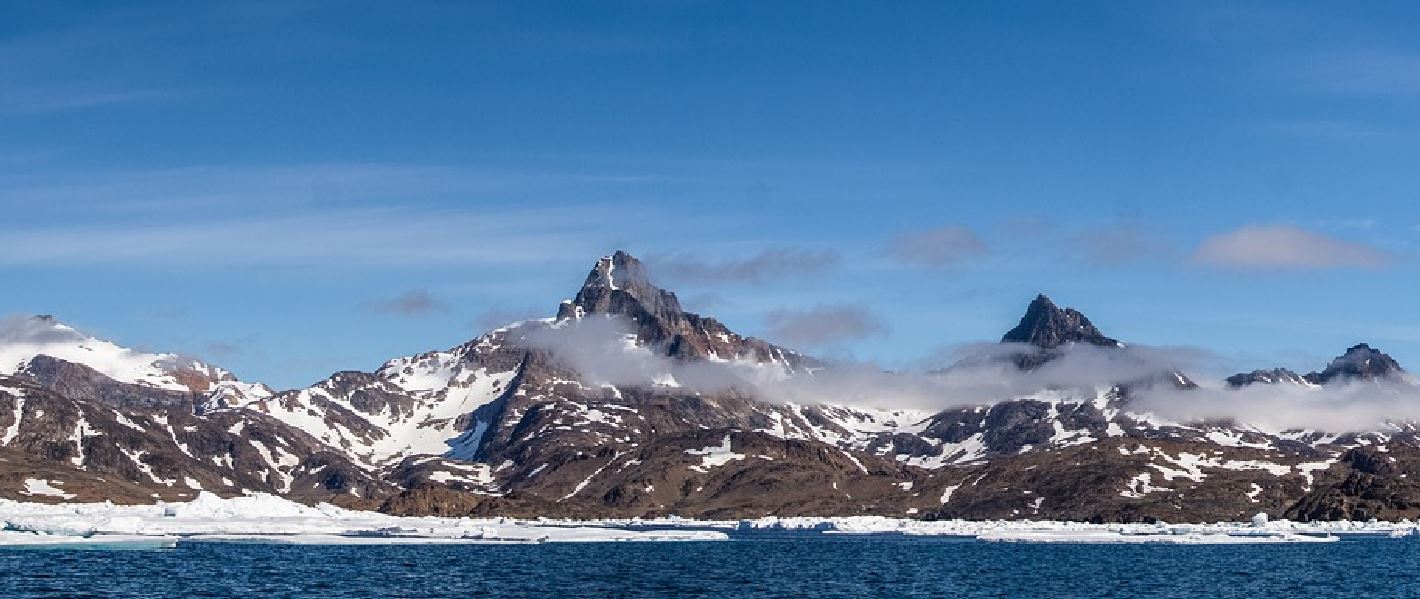SCIENTISTS CHART HISTORY OF DYNAMIC GREENLAND ICE SHEET FOR FIRST TIME 
14 April 2019
New research has been released that charts the history of the Greenland Ice Sheet and its impact on global sea levels throughout history to the present day.
Scientists from Queen’s, The University of Manchester and the Geological Survey of Denmark and Greenland have used extensive reflection seismic surveys to image the structure of the Earth beneath the seafloor off the coast of northwest Greenland.
The study, published in Nature Geoscience, provides the first insight into millions of years of geological history of the north-western Greenland Ice Sheet. This is the first study of its kind and provides an unprecedented insight into the dynamics of the Greenland Ice Sheet over the last 2.7 million years.
By understanding the structure beneath the seafloor scientists are able to reconstruct what the Greenland Ice Sheet was doing and how it impacted the ocean environments around it.
This work shows that on at least 11 occasions during this time the Greenland Ice Sheet became so large that it extended over 120 km beyond its present-day margin during peak glaciation. During intervening warmer periods, the ice sheet melted back to near the present-day coastline, resulting in significant global and regional sea-level rise.
These findings are important to help how the Ice Sheet might evolve in the future in response to ongoing and future climate warming.
Dr Andrew Newton, jointly affiliated with both Queen’s and The University of Manchester, said: “This is an important result because it shows that over the last 2.7 million years the Greenland Ice Sheet has been highly dynamic, even when temperatures outside the ice ages were not as warm as today.
“This means that we can expect the ice sheet to directly respond to rising temperatures across the Arctic, which it is already doing.”
Professor Mads Huuse, from The University of Manchester, said: “By understanding how it changed in the past we may be able to get a better idea of how the Greenland and Antarctic ice sheets might change in the future. The information generated from this work can be used to test the accuracy of numerical models that are used to project how ice sheets might respond to future climate change.
“The better these models are at recreating our observations of the past, the more confidence we can have in what they project for the future.
“Better climate models are essential for future planning and mitigation of the consequences of climate change, in particular the contribution to sea level rise from melting ice sheets.”
The Greenland Ice Sheet was also a topic in the recent David Attenborough-narrated docu-series Our Planet by Netflix. The team captured jaw-dropping footage, showing the scale and impact of millions of tonnes of ice collapsing into the sea.
Media enquiries to Jemma Greenlees at Queen’s University Communications Office, tel: +44 (0)28 9097 3087.
Main image by Jonny Carstensen from Pixabay
Back to Main News
Top of Page